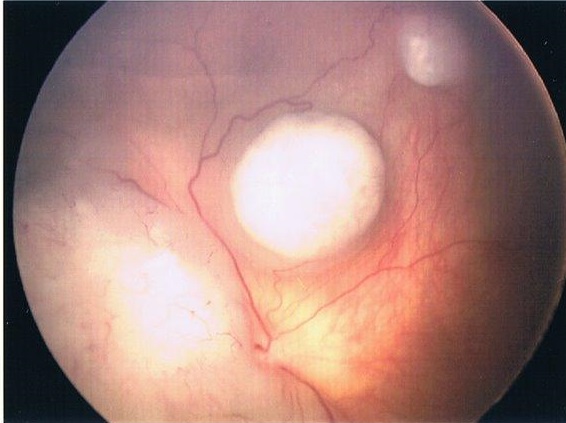Researchers have identified the critical role of a cancer-promoting gene in the growth and survival of retinoblastoma cells. This discovery could lead to new treatment options.
Retinoblastoma is the most common intraocular childhood cancer. It affects approximately 300 children in the United States each year and more than 8,000 worldwide. When detected early, the cure rate is high, but if the diagnosis is delayed, it can result in the loss of an eye and even death.

Researchers at the Saban Research Institute of Children’s Hospital Los Angeles found that a protein known as MDM2 plays a critical role in the expression of another protein, MYCN, that is required for the growth and survival of retinoblastoma cells.
In previous studies, David Cobrinik, MD, PhD discovered that retinoblastoma forms from cone cells in the retina. The recent study, published in the October 17 online edition of the journal Oncogene, looked at characteristics that make these cells prone to retinoblastoma when the RB1 gene is inactivated, allowing for unchecked cell growth.
“An important way in which cone cells differ from other retinal cell types is their high expression of MDM2 and MYCN,” said first author Donglai Qi, PhD. “We have shown crosstalk between these two oncoproteins in which MDM2 promotes MYCN expression in retinoblastoma cells.”
An oncoprotein is encoded by a cancer promoting gene (oncogene). In tumor cells, oncoproteins are often mutated and expressed at high levels. Normally, MYCN provides instructions for the production of a protein that plays an important role in the formation of tissues and organs during embryonic development. But when mutated, the MYCN oncogene has the potential to cause normal cells to become cancerous.
Researchers say in addition to MCYN’s presence in retinoblastoma, it is also elevated in 20 to 25 percent of neuroblastoma tumors, and correlates with advanced disease and poor prognosis. It also plays a role in other childhood cancers.
Researchers say treatments directed at MYCN could be effective, but targeting this oncoprotein is problematic because it is difficult to block. Knowing the link between MDM2 and MYCN, researchers can now look for ways to target the mechanism through which MDM2 regulates MYCN expression.
“This identification of a critical and unexpected node in the retinoblastoma signaling circuitry could theoretically lead to pharmacologic targeting, Cobrinik said.









